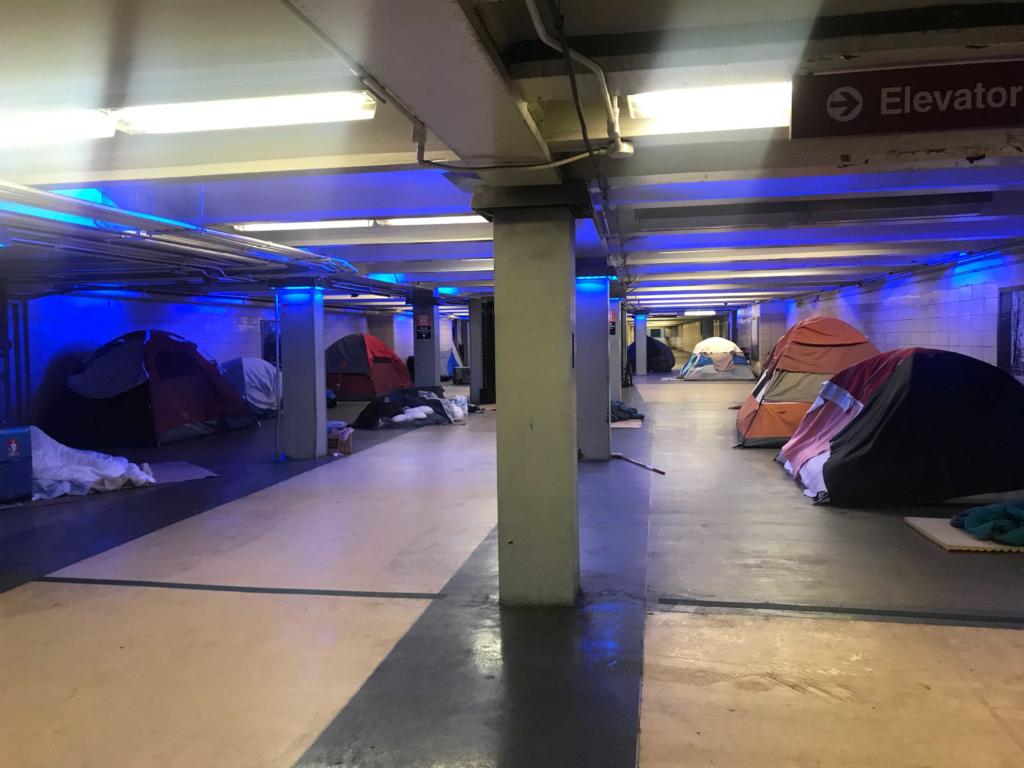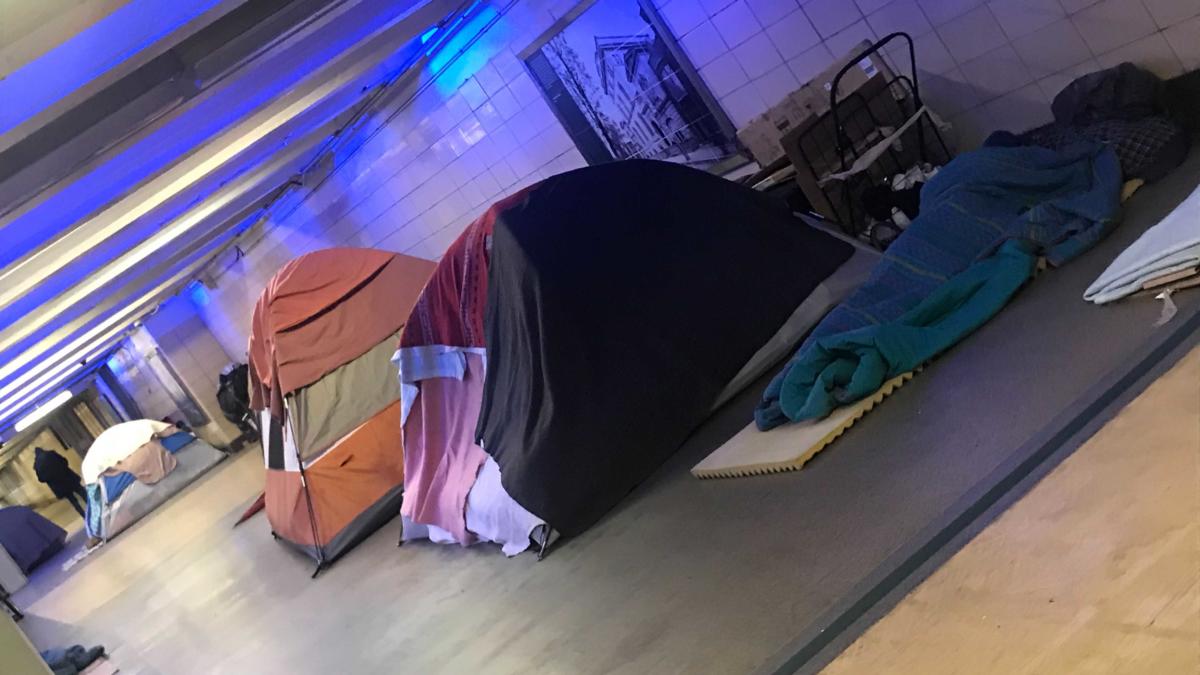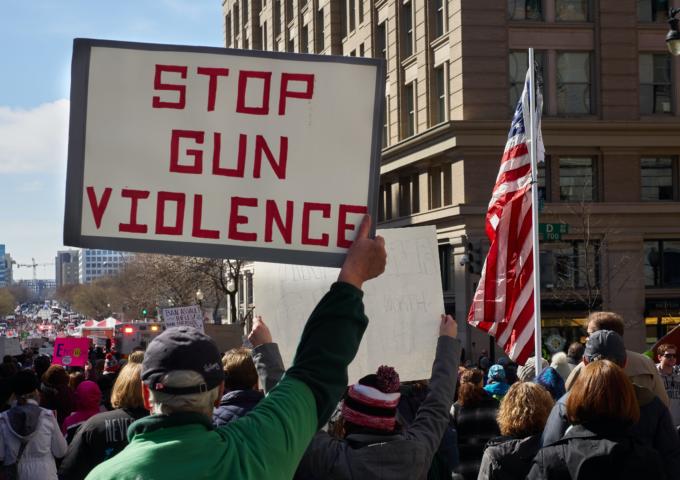When scenes from around Philly’s underground subway system start to resemble those from “Apocalypse Now,” I think it’s fair to say our homeless problem has gotten out of control.
What struck me was a video taken by Tim McCloskey and shared on Twitter from March 29. It was shortly after SEPTA was forced to shut down its Somerset Station in Kensington to repair elevators that had malfunctioned and the station was no longer handicap accessible (or safe, by any means – more on this later).
McCloskey’s video didn’t just show trash piled up on sidewalks, open fires, and people slumped up against walls or dumpster-diving – but there was something scary about it – like these were the horrors of heroin’s grip. And if you lived in that neighborhood and had to use that subway stop, you had to traverse it.
In Center City, there are roughly 25 to 30 people living in and around the PATCO station at 13th-15th Street and Locust during the day, according to the city’s Office of Homeless Services. Those numbers go up overnight and in inclement weather.
Right before the city gave the PATCO station a major scrub down, Fox29’s Steve Keeley went underground and took footage of it.
“In the morning, I’ll take a cab, because it’s too much. It’s too much. I wanna get to work and not smell,” PATCO rider Leyda Muniz told him.
The level of system-wide well-being checks, loitering and code of conduct violations involving the homeless population on SEPTA has grown in staggering numbers over the last 12 months. Last year, SEPTA police made 546 well-being checks (which include interactions with individuals who are otherwise not conscious or alert). That number jumped to 2,357 this past January. SEPTA officials attribute a variety of factors on the spike, in addition to the coronavirus.
“The majority of calls our police officers respond to at 12/13th and 15/16th and Locust Street relate to the relocation of individuals impeding others from freely moving, such as blocking stairwells, elevators, and ticket vending machines,” said Mike Williams, spokesman for the Delaware River Port Authority.
“From the beginning of 2021 to the present, actual incidents logged in these calls were three medical emergencies, one verbal fight between encampment residents, one general complaint, and one well-being check.”

Nya Sturrup, a spokeswoman from the city’s Office of Homeless Services, said they have been beefing up efforts to try and reach out and connect with people for treatment. That’s a big part of the struggle, though. Situations are exacerbated by drug addiction and mental health issues and therefore much of the help that is offered is often refused.
Sturrup said that at the PATCO station in Center City, more than two dozen people have accepted services from homeless outreach workers who attempt to engage with them daily.
“[We’re] leading with services based on what people want, need and will accept. We know that building relationships and establishing trust is what transitions people successfully into long-term housing,” she said.
Fortunately, structurally, there wasn’t a lot of damage, but we’re replacing the floors on the elevators with an epoxy that is supposed to do better at repelling those types of substances. Hopefully, we’ll see behaviors change.
– Andrew Busch
On Monday, SEPTA reopened its Somerset Station after giving it a major deep clean and making repairs to two elevators that broke because they became literally jammed by an overflow of urine, used needles and human waste.
“Fortunately, structurally, there wasn’t a lot of damage, but we’re replacing the floors on the elevators with an epoxy that is supposed to do better at repelling those types of substances. Hopefully, we’ll see behaviors change,” said Andrew Busch, a SEPTA spokesman.
During the nearly two-week closure, many of the homeless and drug-addicted moved to nearby subway stations to hang out. Allegheny station is next on deck for deep clean.
Busch said SEPTA will be replicating what it did at Somerset at the Allegheny Station and they will be able to keep that station open during the process, which consists of deep-cleaning, painting, elevator repairs, and enhanced lighting.
“We’ve seen the vulnerable population on the SEPTA system grow, and in particular on the Market-Frankford Line. We’re expanding outreach efforts to help with police. We’re also adding 60 security guards on the Market-Frankford Line, which will start this week or next week,” said Busch.
“There isn’t necessarily a long-term police solution to this, so, we’re working with a lot of different people to try and get some more solutions to that.”
This week, the city‘s Office of Homeless Services announced the launch of “Help for the Hurdles,” a new initiative paid for in part by the CARES Act that gives people living in homeless shelters transportation and childcare to make it easier for them to get jobs.





